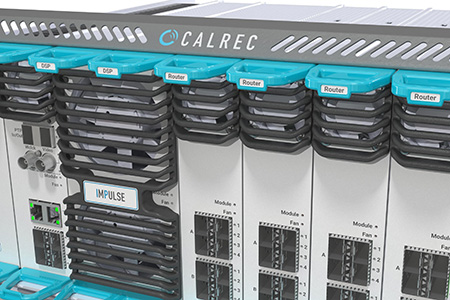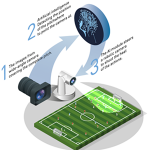The VP2 has no physical control surface and utilises Calrecs Assist software for setup and control. VP2s 4U core comes in three DSP sizes; 128, 180 and 240 input channels and incorporates Calrecs Hydra2 networking solution.
 Calrec Audio will be displaying its IP, remote production and virtual products at IBC 2019, in Amsterdam from September 13 to 17.
Calrec Audio will be displaying its IP, remote production and virtual products at IBC 2019, in Amsterdam from September 13 to 17.
On display for the first time at IBC will be Calrecs VP2 virtualised mixing system.
VP2 has no physical control surface and utilises Calrecs Assist software for setup and control.
VP2s 4U core comes in three DSP sizes; 128, 180 and 240 input channels and incorporates Calrecs Hydra2 networking solution. Calrec Serial Control Protocol (CSCP) can allow the audio console to be completely controlled by an automation system.
VP2 provides the station with many benefits of using a Calrec console without a physical control surface.
Control and setup is via Calrecs Assist software, which can be accessed from multiple locations via a web-browser.
Also on display at the show will be ImPulse core audio processing and routing engine. Calrecs ImPulse core is an audio processing and routing engine with AES67 and SMPTE 2110 connectivity.
The ImPulse core is compatible with current Apollo and Artemis control surfaces, providing a simple upgrade path for existing Calrec customers.
In addition, future scalable expansion will allow up to four DSP mix engines and control systems to run independently on a single core at the same time, providing the ability to use multiple large-format mixers simultaneously.
ImPulse provides 3D immersive path widths and panning for next-generation audio applications, and has an integral AoIP router, which supports NMOS discovery and connection management, as well as mDNS/Ravenna discovery.
Calrec will also have on hand its H2-IP Gateway and the AoIP Modular I/O controller card. Both products are SMPTE 2110/AES67-compatible and expand the range of AoIP solutions Calrec now offers.
The H2-IP Gateway provides an interface between a Hydra2 network and an AoIP network. It also provides an extra control level that allows audio labels to be passed in both directions between the two networks along with control data.
The 1U gateway can pass either 256 or 512 channels of audio in each direction and multiple gateways can be used to increase capacity or to connect with multiple networks. For full hardware redundancy, additional units can be deployed as backups.
















































































